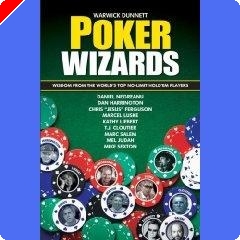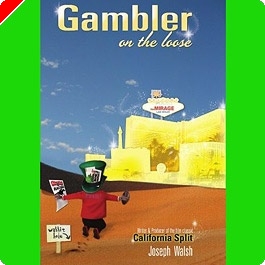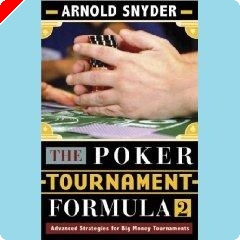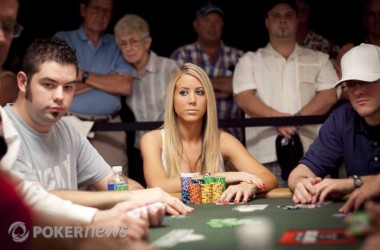Poker Book Review: Daniel Negreanu's 'Power Hold'em Strategy'
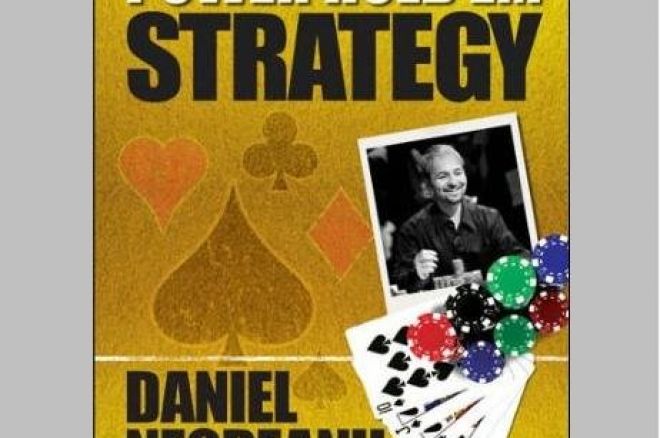
There aren't many professional poker players who have received as much notice and acclaim in recent years as Daniel Negreanu. His four WSOP bracelets, two WPT titles, and numerous final tables and cashes have proven such attention and respect to have been well deserved. As a result, few poker strategy titles have been as greatly anticipated as Negreanu's new Power Hold'em Strategy — perhaps even more after his much less ambitious Hold'em Wisdom for All Players appeared early last year. Those who have been awaiting the "big one" from Negreanu will not be disappointed, as Power Hold'em Strategy provides a great deal of useful instruction to the serious hold'em player.
A little over half of the 500-page text is occupied by contributions from Negreanu's five collaborators: Evelyn Ng, Todd Brunson, Erick Lindgren, Paul Wasicka, and David Williams. Such a group — all of whom are in their 20s and 30s — together present a representative cross-section of that younger generation of poker players to which "Kid Poker" himself belongs.
The book begins with Evelyn Ng's chapter outlining a relatively uncomplicated "big-bet" strategy for no-limit hold'em tournaments — in some ways the antithesis of the approach Negreanu advocates later on. As Ng explains, the strategy summarizes advice Negreanu himself gave her after she had been invited to play the 2003 WPT Ladies' Night where she would finish second. The strategy resembles in certain respects the "Kill Phil" theory of avoiding difficult post-flop decisions, thereby giving novice players a means "to neutralize the edge enjoyed by more experienced opponents." Ng offers starting hand guidelines and quite specific advice about bet-sizing when raising before the flop, though also gives recommendations for handling certain situations one tends to face on the flop, turn, and river.
The intervening sections by Negreanu's co-authors all primarily focus on cash games, although one finds extended discussions of tourney play popping up in the entries by Lindgren and Williams. Todd Brunson's section on "Winning at High-Limit Games" is the most loosely-organized of the group, collecting a few briefly-sketched tips on determining appropriate buy-ins, table image, bluffing, and trapping. Brunson's section is interrupted on a couple of occasions by a dozen pages' worth of not-terribly-necessary illustrations. Such wouldn't garner a mention if not for the fact that Brunson begins a concluding two-page section on "The Big Game" (at the Bellagio) with a disclaimer that he's "about out of space" and thus cannot really treat the subject with any depth. Then again, Brunson may not have wanted to speak too openly about what happens in Bobby's Room.
Erick Lindgren's section on "Playing No-Limit Hold'em Online" is a smart, accessible survey of several online-specific issues, including note-taking, timing tells, recognizing betting patterns, and other ways to gain information about opponents you cannot see. "One great read you can get on opponents online, even before a single hand is played," says Lindgren, "is the amount of chips a player buys in for." He goes on to offer tactics for dealing with the short-stackers — an especially prevalent phenomenon online — among other, more general strategy tips for cash games. Lindgren concludes with a well-chosen list of ten strategies for "short-stacked" or fast-structure online tournaments.
Paul Wasicka's section on "Short-Handed Online No-Limit Hold'em Cash Games" is the shortest in the book, but is particularly well managed, and like Lindgren's section offers a number of great pointers specific to the online game. Wasicka's topics include bankroll management, multitabling, "online tilt," player types, and so-called "meta-game" considerations. "The cornerstone of the meta-game strategy is applying precedent to specific situations," explains Wasicka. "Knowing that other players are looking for patterns, you establish one and then use it to your advantage."
The "meta-game" is also a primary focus of David Williams in his section, titled "Mixing it Up." Williams organizes his section around analyses of particular hands, first from cash games, then from tournaments. In each case he addresses the context for the hand being considered, focusing on previous patterns of play and his own efforts to keep opponents off-balance by his unpredictable style. His treatment of tournament play includes advice about approaching the various stages of tourney play, bluffing, playing "junk hands," changing gears, and being (or dealing with) what he calls the "alpha male" or player who wishes to assume the role of table captain.
Of course, most who seek out Power Hold'em will do so for Negreanu's contribution, a lengthy (200-page) tutorial instructing the reader how to apply his favored "small ball" approach to deep-stacked, no-limit hold'em tournaments.
One might characterize "small ball" as a kind of middle ground between the conservative style of the popular Harrington on Hold'em series and the more aggressive techniques articulated by Doyle Brunson in the original Super/System and favored by many of today's "young guns." As Negreanu explains, the "small ball" strategy, when correctly followed, often tends to confuse opponents, giving the impression that the player following it "appears to be in control of the table, yet at the same time, seems to be playing with reckless abandon, giving little thought to the strength of his starting hand."
A core principle of "small ball" is finding ways to increase one's own stack without taking inordinate risks, constantly exploiting factors like position, board texture, and weak and/or predictable opponents to keep chipping up as the tourney progresses. Indeed, much of what Negreanu recommends involves "playing your opponent's hand rather than focusing on your own hand," or, more specifically, "focusing more on what your opponent doesn't have than the strength of the cards you do have."
The style requires one to be active, playing more pots than perhaps Harrington generally advises, but nonetheless to remain cautious, keeping pots small when necessary and being willing to give free cards — or even give up on certain pots — when doing otherwise might needlessly jeopardize one's tournament life. "By playing small ball, you will take more lumps and lose more pots than when you are playing big-bet poker," Negreanu explains. Thus does the style perhaps best suit a more "emotionally stable" player who can "keep composure" in the face of such adversity.
Negreanu's section is especially well-written and smartly ordered. Rather than directly focus on the various stages of a tournament (i.e., early, middle, late, final table), Negreanu organizes his instruction according to the four betting rounds of a hold'em hand: preflop, flop, turn, and river. When discussing preflop play, Negreanu does offer some recommendations regarding starting hands. However, since much of his subsequent advice is not necessarily card-dependent, Negreanu confines himself to explaining briefly how various card groups tend to fit the "small ball" approach. Other topics addressed here include bet-sizing, "dead money grabs," and smooth calling with position.
Since "the key to the whole small-ball concept is being able to outplay your opponents after the flop," the bulk of Negreanu's section focuses on what to do after the flop. The treatment of flop play includes suggestions about playing position, keeping pots small, cutting one's losses, and knowing when to semi-bluff, bluff, or go for the "home run." There is much worthwhile advice here, including explanations for why Negreanu is not such a fan of betting to "find out where you're at" when less expensive ways to gather such information exist.
The section on turn play builds on the earlier discussion with further, specific pointers about several commonly-faced situations. Also included here is an especially thorough and clear explanation of implied odds, well illustrated by sample hands. Indeed, Negreanu does an excellent job throughout moving back and forth between presenting concepts and "hands in action." The lesson concludes with advice about river play, including tips on value betting, defensive betting, checking in marginal spots, and laying down hands (among other topics).
It may seem misleading for a strategy called "small ball" to be featured in a book titled Power Hold'em Strategy. Then again, much of the strategy's "power" is derived from the way it can mislead one's opponents, enabling the player who might seem to some "weak" or "passive" or "reckless" to be, in fact, the most powerful at the table. Together with the contributions of his co-authors, Negreanu here offers a significant, valuable contribution to hold'em strategy.

